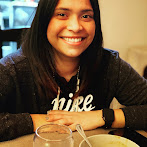What’s the best feature of the photograph? Portraits! Photos capture faces. And I’ve appreciated faces lately — especially during this recent Spring Break-cum-Easter time and so on.
As vaccinations against Covid-19 are more widely distributed, people are congregating with each other to celebrate. While mask-wearing and general social
distancing guidelines are still in place, being vaccinated means I can hang out with folks I haven’t been with since March of last year. I saw my friend Michelle and her family, and I made jambalaya for a group of teacher-friends. By the way — the jambalaya was lit 🔥.
 |
| In Diversity Plaza in Queens on a Spring Day |
distancing guidelines are still in place, being vaccinated means I can hang out with folks I haven’t been with since March of last year. I saw my friend Michelle and her family, and I made jambalaya for a group of teacher-friends. By the way — the jambalaya was lit 🔥.





















